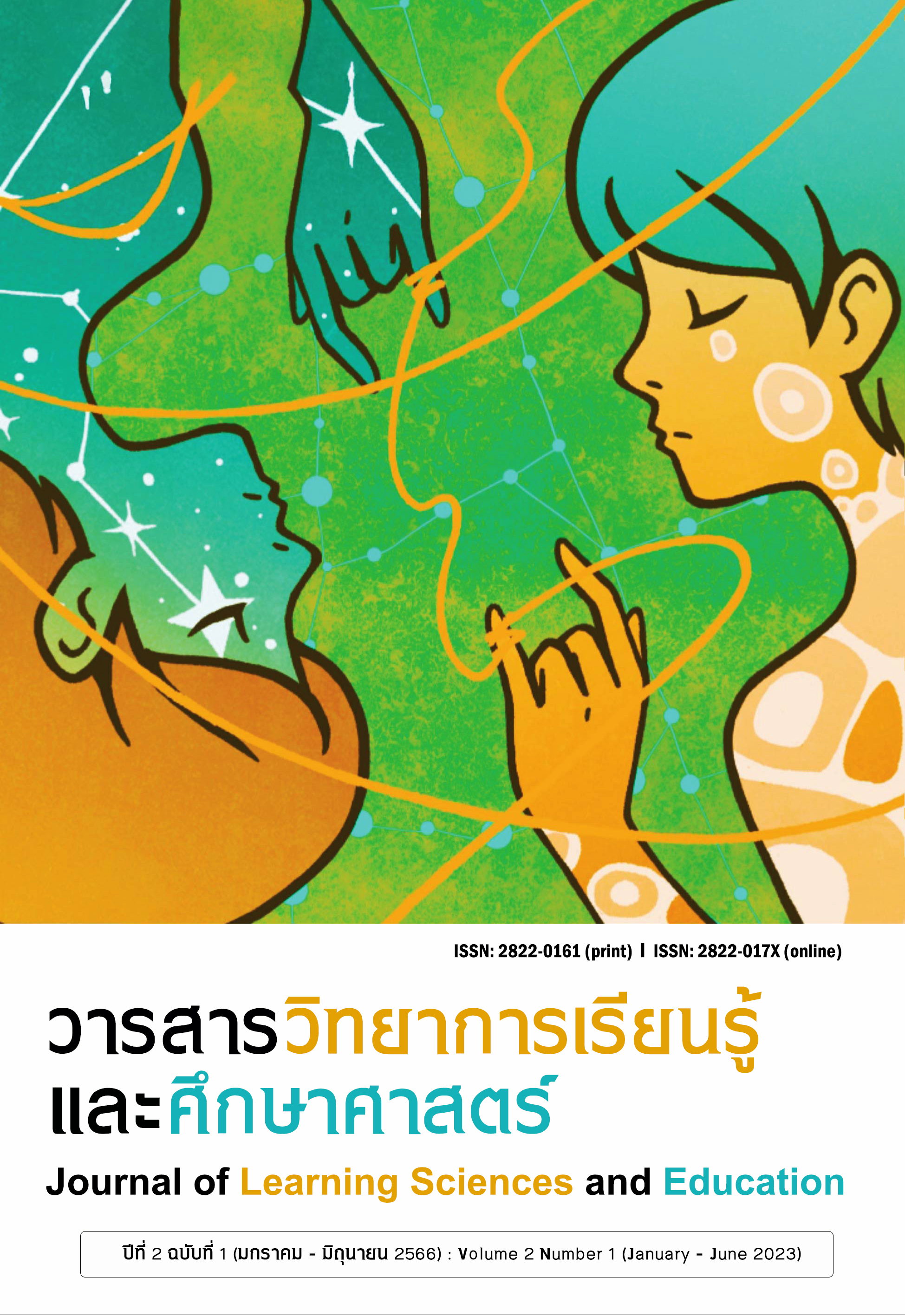ถอดบทเรียนนักการละครประยุกต์: กระบวนการละครเยาวชนฐานชุมชนเพื่อสร้างการเรียนรู้ จิตสำนึกร่วมและ อัตลักษณ์จากเรื่องเล่าของเยาวชน
Main Article Content
บทคัดย่อ
บทความเรื่องนี้ใช้การสัมภาษณ์และการสังเกตนักการละครประยุกต์ที่ทำงานกับเยาวชนในชุมชนต่างๆ 4 คนได้แก่สมบัติ แก้วเนื้ออ่อน เสาวนีย์ วงศ์จินดา บุญพงษ์ พานิชและนลธวัช มะชัยเพื่อถอดองค์ความรู้เกี่ยวกับการใช้การละครประยุกต์ที่เป็นกระบวนการสร้างการเรียนรู้ให้แก่เยาวชนในพื้นที่ ละครประยุกต์เป็นกระบวนการที่สร้างอัตลักษณ์และจิตสำนึกร่วมให้แก่เยาวชนเพราะเยาวชนได้สะท้อนความคิดและร่วมสร้างเรื่องเล่าจากประเด็นคัดสรรในชุมชนด้วยการลงพื้นที่เพื่อศึกษาประเด็นปัญหาร่วมกับทำความรู้จักชุมชน ละครประยุกต์สามารถใช้ร่วมกับกระบวนการเรียนรู้อื่นๆ ได้ ความสำเร็จมาจากการรู้จักทุนทางวัฒนธรรมและสังคมในพื้นที่ที่ดีของนักการละคร ความสัมพันธ์ที่ดีที่นักการละครมีต่อผู้เข้าร่วมกระบวนการ ละครประยุกต์เป็นกระบวนการพัฒนาเยาวชนผ่านทางทักษะการแสดง สถานการณ์ของตัวละคร และการทบทวนสะท้อนการเรียนรู้หลังกิจกรรม
Article Details

อนุญาตภายใต้เงื่อนไข Creative Commons Attribution-NonCommercial-NoDerivatives 4.0 International License.
เอกสารอ้างอิง
Adams J.R., & Charles N. (2013). Learning Through Theatre: The Changing Face of Theatre in Education. (3rd ed.). Routledge, pp. 287-304. https://doi.org/10.4324/9780203116753
Barber, R. (2008). The art of peace: A toolkit of theatre art for conflict resolution. Makhampom Foundation
Blatner, A. (2007). Interactive and improvisational drama: Varieties of applied theatre and performance. iUniverse
Freire, P. (2015). Pedagogy of the Oppressed. Continuum. Damrhung, P. (n.d.). ละครประชาชน: ความเปลี่ยนแปลงจากภายในนำสู่การเปลี่ยนแปลงที่ยั่งยืน [Public Drama: Internal Transformation Leading to Sustainable Change]. Makhampom Foundation.
Damrhung, P. (2014). ละครประยุกต์ การใช้ละครเพื่อการพัฒนา [Applied Drama: The Use of Drama for Development]. Chulalongkorn University Press.
Green, M. E. (2017). Race, class, and religion: Gramsci’s conception of subalternity. In C. Zene (Ed.), The political philosophies of Antonio Gramsci and B.R. Ambedkar: Itineraries of dalits and subalterns (pp. 116–128). Routledge. https://doi.org/10.4324/9780203762035.
Guha, R., & Spivak, G. C. (1988). Selected subaltern studies. Oxford University Press.
Hornbrook, D. (1998). Education and Dramatic Art (2nd ed.). Routledge.
Jungwiwattanaporn, P. (2004). ละครสร้างสรรค์สำหรับเด็ก [Creative drama for students]. Institute of academic development Makhampom foundation (n.d.). เมล็ดพันธุ์แห่งปัญญา 2 คู่มือกิจกรรมและบันทึกประสบการณ์ โครงการละครเพื่อการเปลี่ยนแปลง [Seeds of Wisdom 2: Manuals of Activities and Experience Recording for the Drama Project for Transformation.]. Makhampom foundation.
Ngamchaipisit, K. (2023). ฟาสามัญ: คู่มือสร้างกระบวนการกลุ่มเพื่อขับเคลื่อนสู่ความเป็นธรรม [General Fa: handbook of developing of group process for driving to Justise]. Peace Resource Collaborative
Nicholson, H. (2005). Applied Drama the Gift of Theatre. Palgrave Macmillan.
Prentki, T., & Preston, S. (2009). The applied theatre reader. London: Routledge.
Romrattanaphan, V. (2005). ทุนทางสังคม [Social capital]. เสริมสร้างการเรียนรู้เพื่อชุมชนเป็นสุข (สรส.).
Spivak, G. C. (1988) “Can The Subaltern Speak?”, in C. Nelson & L. Grossberg (Eds.), Marxism and the Interpretation of Culture (pp. 267-310). McMillan Education.
Sutthinarakorn, W. (2017). Transformative Learning and Action Research (2nd ed.). Siamparitut.
Taylor, Philip. (2003). Applied Theatre Creating Transformative Encounters in the Community. New York University.
Toburin, P., & Suraswadi, P. (2022). เยาวชนคนรุ่นใหม่กับศิลปะสะท้อนการเมืองและสังคมร่วมสมัย: มุมมอง พลวัตและความท้าทายในการสร้างสรรค์ (สาขาศิลปะการละคร) [Young generation and arts reflecting politics and contemporary society: perspectives, dynamics, and challenges in making arts (theatre arts)]. Faculty of learning sciences and education, Thammasat University.


